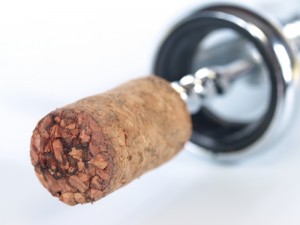 Knowing how to judge the quality of a wine is essential to its enjoyment. No one should suffer through horrid smells and tastes simply because of lack of information. Understanding a wine’s quality starts with a simple question you can ask yourself: Is this wine clean?
Knowing how to judge the quality of a wine is essential to its enjoyment. No one should suffer through horrid smells and tastes simply because of lack of information. Understanding a wine’s quality starts with a simple question you can ask yourself: Is this wine clean?
Whether you are a beginner or expert your nose will quickly guide your answer. Clean wines have no trace of musty, moldy, rotten egg or vinegar smells.
Twenty years ago poor quality, unclean wines were more commonplace, but with today’s technology only a minuscule amount of bottles are faulty because of an error in the wine-making process. Today, the culprit, most likely, is the cork or disturbances along the journey from the winery to your glass. The following are some common problems and ways to identify them.
CORK TAINT/ CORKED WINES
Cork taint is the most common wine fault and is thought to affect up to 10 percent of wines bottled in the world. The befouling happens when a cork infected with a fungus producing 2,4,6-trichloroanisole (TCA) contacts the wine. The contact imparts musty and moldy aromas. Research shows that TCA also may be linked, ironically enough, to the chlorine bleaching used to sterilize corks. Corked wines are one of the most obvious faults to detect because of the musty aromas.
In the late 1990s, cork taint forced many wine producers to seek alternate closures, including screw caps and synthetic corks. The switch to screw top or synthetic was a direct result of the escalating occurrence of tainted corks. The TCA fungus is not able to harbor in screw tops, beer tops or synthetic closures.
OXIDATION
This results when wine is exposed to air, usually because of a faulty cork.
Oxidized wines are simple to detect, with their dull or stale fruit aromas and flavors. These wines will have a brownish color because of the contact with oxygen, much like how a cut apple will brown when exposed to air. Keep in mind a few wines are intentionally oxidized during the fermenting process, such as sherry and port. But for the others, oxygen is not a wine’s friend during the making or in the bottle.
VOLATILE ACIDITY
Though rare, this fault occurs from poor hygiene or temperatures during wine making. At its worst this fault is easy to single out, with aromas of vinegar or nail polish remover.
BAKED WINES
Baked or cooked wines largely result from exposure to high temperatures during storage or transportation. Not only does the extreme heat change the taste but it can also cause oxidation. When a wine is exposed to high temperatures the liquid expands, forcing the cork from the neck of the bottle. After the wine cools the cork will contract, leaving the opportunity for air to trickle in around the displaced cork.
Detecting a cooked wine is straightforward because it tastes and smells as if it was cooked. The wines usually lose freshness, smelling more like stewed fruit or prunes. In my experience this fault is less of an issue, and is avoided when buying from reputable retailers and distributors diligent about shipping and storage conditions.